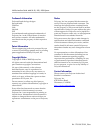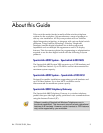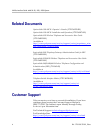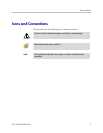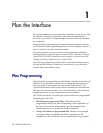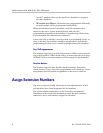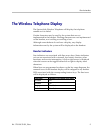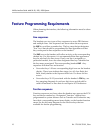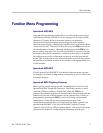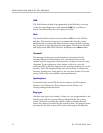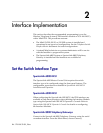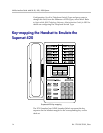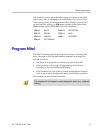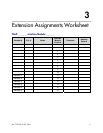
LinkPlus Interface Guide: Mitel SX-50, -200, -2000 System
PN: 1725-36137-001_E.doc
10
Feature Programming Requirements
When planning the interface, the following information must be taken
into account:
Line sequences
The handset uses two types of key sequences to access PBX features
and multiple lines. Line sequences are those where the user presses
the
LINE key and then a number key. The key-map design designates
“line” keys that should be programmed for line appearance so that
they correspond to line sequences on the handset.
The
LINE icon on the handset will reflect activity on the corresponding
deskset key. For this reason, it is recommended that line appearance
keys be used only for line access. If only one line is assigned to a
particular handset, leave the other designated line keys identified on
the key maps unassigned. The corresponding handset
LINE + key
sequences will then have no function.
• Line select keys 1-9 have corresponding digit icons on the handset
display. These icons indicate line status (on, off, slow flash, fast
flash, wink) similar to the Superset 420 icons. Use these for line
access.
• Line select keys 10-12 (associated with the handset’s FCN key, see
key-mapping diagram) do not have digit icons and should be
used for functions or lines that do not require LCD indicators.
Function sequences
Function sequences are those where the handset user presses the FCN
key and then a number key. Designated “function” deskset keys
programmed to system features such as Transfer and Conference may
have their corresponding menu items display on the handset function
menu. See the key-map diagram for the function keys that are
available for feature programming.



